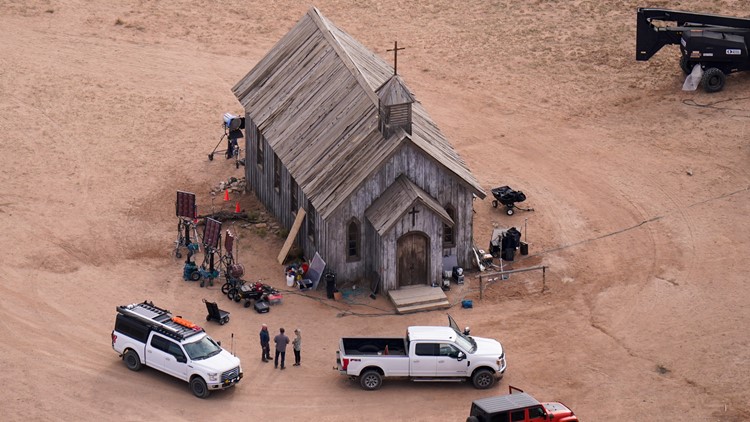WASHINGTON — The fatal film-set shooting of a cinematographer by actor Alec Baldwin last year was an accident, according to a determination made by New Mexico's Office of the Medical Investigator following the completion of an autopsy and a review of law enforcement reports.
The medical investigator's report was made public Monday by the Santa Fe County Sheriff's Office along with numerous reports from the FBI on the revolver and ammunition that were collected following the shooting.
Prosecutors have not yet decided if any charges will be filed in the case, saying they would review the latest reports and were awaiting cell phone data from Baldwin's attorneys.
Baldwin was pointing a gun at cinematographer Halyna Hutchins when it went off on Oct. 21, killing Hutchins and wounding the director, Joel Souza. They had been inside a small church during setup for filming a scene.
While it's too early to say how much weight the medical investigator's report will carry with the district attorney's office, Baldwin's legal team suggested it was further proof that the shooting was “a tragic accident” and that he should not face criminal charges.
“This is the third time the New Mexico authorities have found that Alec Baldwin had no authority or knowledge of the allegedly unsafe conditions on the set, that he was told by the person in charge of safety on the set that the gun was ‘cold,’ and believed the gun was safe,” attorney Luke Nikas said in a statement.
Baldwin said in a December interview with ABC News that he was pointing the gun at Hutchins at her instruction on the set of the Western film “Rust” when it went off after he cocked it. He said he did not pull the trigger.
An FBI analysis of the revolver that Baldwin had in his hand during the rehearsal suggested it was in working order at the time and would not have discharged unless it was fully cocked and the trigger was pulled.
With the hammer in full cock position, the FBI report stated the gun could not be made to fire without pulling the trigger while the working internal components were intact and functional.
During the testing of the gun by the FBI, authorities said, portions of the gun's trigger sear and cylinder stop fractured while the hammer was struck. That allowed the hammer to fall and the firing pin to detonate the primer.
“This was the only successful discharge during this testing and it was attributed to the fracture of internal components, not the failure of the firearm or safety mechanisms,” the report stated.
It was unclear from the FBI report how many times the revolver's hammer may have been struck during the testing.
Baldwin, who also was a producer on the movie “Rust,” has previously said the gun should not have been loaded for the rehearsal.
Among the ammunition seized from the film location were live rounds found on a cart and in the holster that was in the building where the shooting happened. Blank and dummy cartridges also were found.
New Mexico’s Occupational Health and Safety Bureau in a scathing report issued in April detailed a narrative of safety failures in violation of standard industry protocols, including testimony that production managers took limited or no action to address two misfires on set prior to the fatal shooting.
The bureau also documented gun safety complaints from crew members that went unheeded and said weapons specialists were not allowed to make decisions about additional safety training.
In reaching its conclusion that the shooting was an accident, New Mexico's medical investigator's office pointed to “the absence of obvious intent to cause harm or death” and stated that there was said “no compelling demonstration” that the revolver was intentionally loaded with live ammunition on the set.



